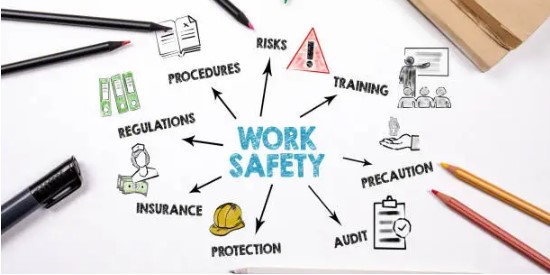Top 10 SEO mistakes businesses make (and how to fix them with a simple SEO checker tool)
SEO can bring in consistent traffic and customers, but only when your site is set up correctly without flaws popping up everywhere.
Many businesses make common mistakes that disturb their ranking potential and lower their visibility on Google.
The worst part? Most of these issues go unnoticed because no one checks for them.
Here are the most common 10 SEO mistakes businesses make – and how to fix them quickly using a reliable SEO checker.
Mistake 1: Ignoring technical SEO issues
Technical problems affect how search engines crawl and rank your site. If your site loads slowly, has broken pages, or doesn’t work well on mobile, search engines will push it down the results, even if your content is good.
Maybe because your site is offering a bad user experience, but it can also be as fatal as search engine crawlers simply can’t access the pages and the content correctly.
Fix: Run a technical audit using an SEO checker. Look for problems like crawl errors, slow page speed, missing HTTPS, and mobile layout issues. Website checker tools give you a list of errors and tell you where to fix them. Start with anything marked as “critical” on money pages (the pages that generate the most traffic, sales, or leads).
Mistake 2: Not optimizing title tags and meta descriptions
Title tags and meta descriptions are the first things users see in search results. If these are missing, repeated across pages, or don’t include relevant keywords, you miss clicks and search engines might skip your page.
Fix: Use an SEO tool to scan for missing or duplicate title tags and meta descriptions. Rewrite each one to be unique, clear, and include the main keyword. Make titles match the search intent and keep meta descriptions under 160 characters. As a little extra, you can add a call to action at the end, use numbers, or psychological triggers.

Mistake 3: Targeting the wrong keywords
Ranking for the wrong keywords leads to wasted traffic. If your site ranks for terms that are too broad or unrelated to your offer, users will bounce and your conversion rate will suffer.
Additionally, if that happens, you will see your rankings drop down the rank ladder.
Fix: Check which keywords your site ranks for using your SEO tools’ keyword tracking feature. Focus on specific, relevant keywords that match what your ideal customers are searching for. Avoid chasing high-volume terms if you don’t have the content or domain strength to compete.
Mistake 4: Poor internal linking structure
Internal links help search engines discover your pages and understand your site structure. If you forget to link to important pages or use random anchor text, Google might not understand the value of those pages. More important pages should have more internal links pointing to them to state the hierarchy of the website.
Fix: Link to important pages from your home page and other top-performing pages. Use descriptive anchor text that includes relevant keywords. SEO checkers often list orphaned pages. Fix this by adding links to those pages from elsewhere on your site. Another trick you can use is to head to Google and search: site: domain.com *keyword* to find relevant pages to include an internal link to the main/important page.
Mistake 5: Publishing thin or duplicate content
Google values content that provides depth and answers search intent. If your site has pages with very little information or copied content, Google may ignore them or, in the worst case, penalize your rankings.
Stay in your lane and publish relevant content within your niche even when it’s tempting to go broad because of search volume metrics.
Fix: Use a content audit tool to find thin pages (usually under 300 words) or duplicate content. Combine similar pages into one stronger page or add more useful content. Rewrite anything that’s duplicated internally or copied from other sites.
Mistake 6: Forgetting mobile optimization
More than half of web traffic now comes from mobile devices. If your site doesn’t display well on phones or tablets, users will leave, and Google will take notice. Google uses “Mobile First Indexing,” which means that your mobile version is basically what is used to determine yosite’site performance.
So, even though you are one of the businesses that still have more desktop traffic, you shouldn’t neglect mobile optimization if you want Google traffic.
Fix: Use an SEO checker to test mobile usability. Look for issues like text that’s too small, elements that are too close together, buttons that are not clickable, or content that’s cut off. Switch to a responsive design if you’re not already using one.
Mistake 7: Not fixing broken links
Broken links damage trust and waste link equity. A user who clicks a broken link lands on a 404 page and often leaves for good, as the trustworthiness is completely gone. Search engines also crawl broken links, which weakens your site’s overall quality.
Fix: Run a site scan to find all broken internal and external links. Fix them by updating the link, removing it, or adding a redirect. Broken links build up over time, so check for them regularly. You would be surprised how often broken internal and external links appear on both small and large websites.
Mistake 8: Overlooking image optimization
Images take up a lot of space and affect how fast your site loads. If they aren’t optimized, your site slows down and your rankings drop. Missing alt text is also a missed opportunity for SEO and accessibility, especially if your business is in a niche that attracts Google Image Search traffic.
Fix: Compress images before uploading them to reduce file size using online tools as TinyPNG or website plugins. Add alt text to describe each image, especially if it includes a product, place, or keyword. Your SEO tool can show which images are missing alt text or are slowing down your site.
Mistake 9: Skipping regular SEO audits
SEO is not a one-time task. As your website grows, new issues show up – and they can quietly damage your rankings if you don’t catch them early.
Fix: Set a reminder to run an SEO audit at least once a month. Website audit tools give you a full report in minutes and can be set to automatically run a fresh audit weekly, so you can catch issues before they cost you traffic.
Mistake 10: Not measuring what matters
Many businesses focus on surface-level numbers like total traffic, but they miss important details like keyword rankings, bounce rate, or conversions from organic search.
Traffic doesn’t pay the bills, so it’s important to track and optimize for conversions as well as just getting more traffic. An increase of 1% conversion rate can be a much better business than getting a traffic increase.
Fix: Track your keyword performance, organic traffic trends, and the overall SEO health score of your site. Use your SEO checker to monitor changes after you fix issues or publish new content. Focus on metrics that show whether your SEO actually brings in customers.








